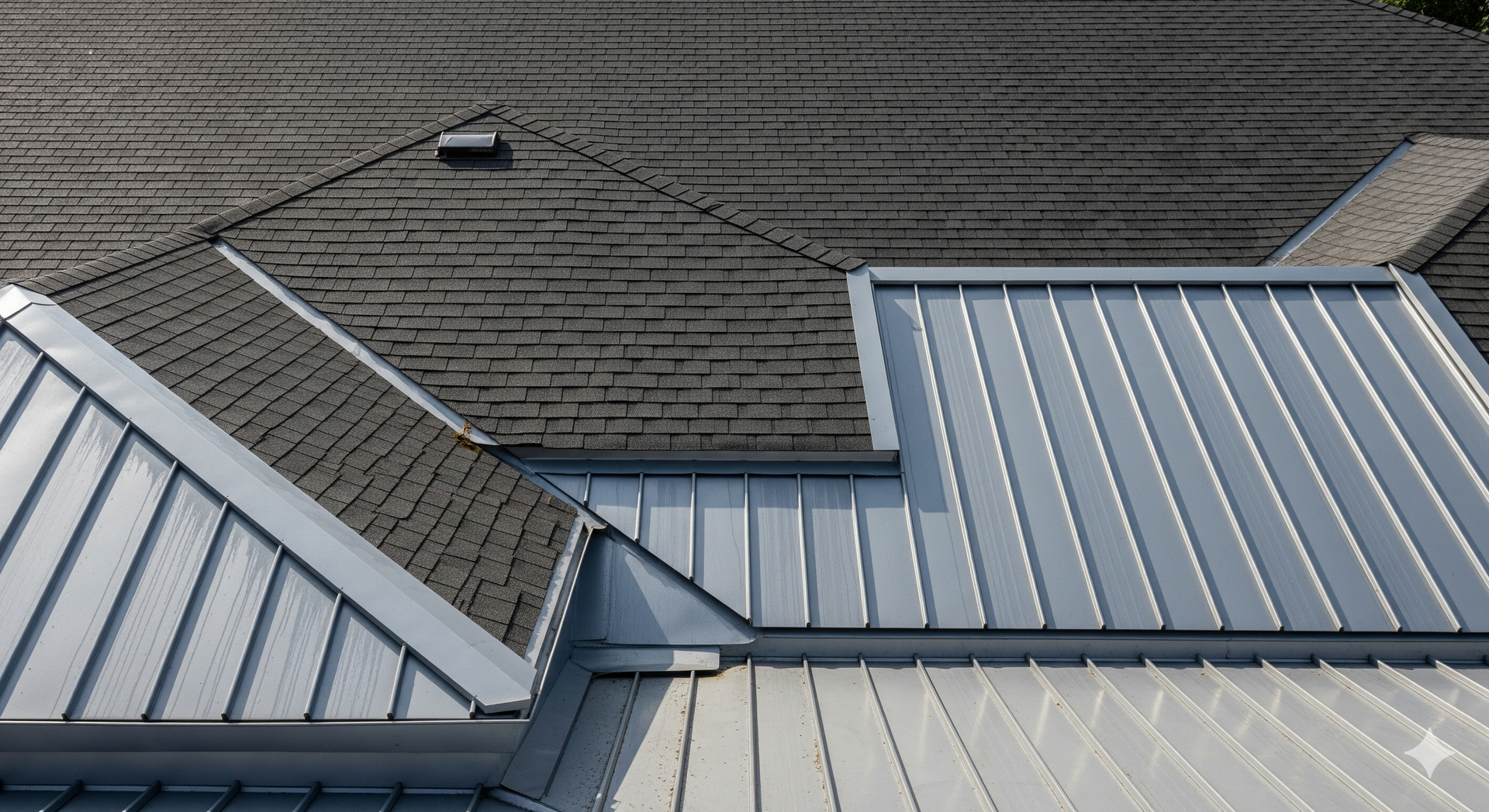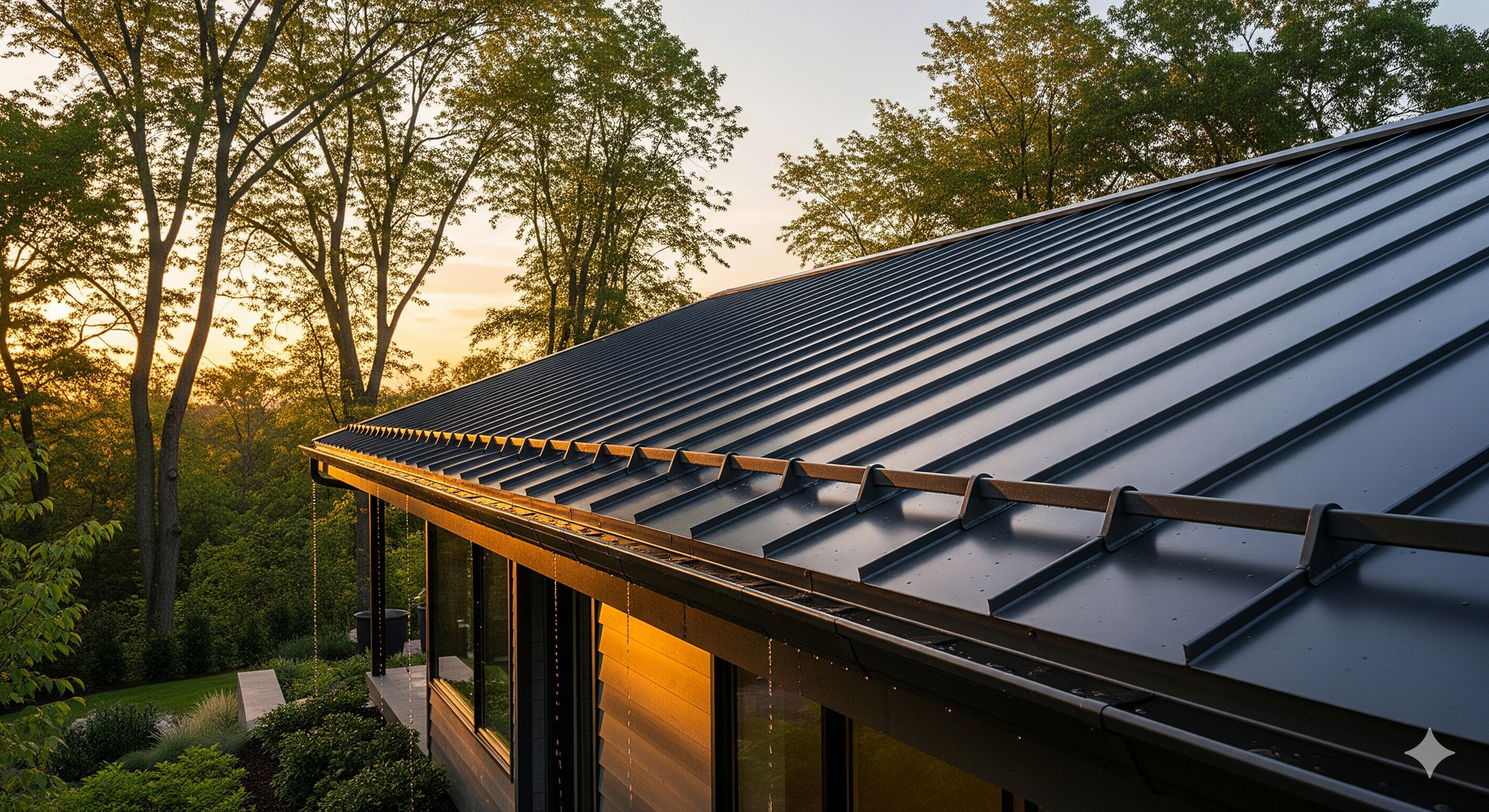The Ultimate Homeowner’s Guide to Roof Lifespans
- Roof lifespan varies greatly depending on material, climate, and maintenance.
- Asphalt shingles last about 15–30 years.
- Metal, tile, and slate roofs can last over 40 years with proper care.
- Routine inspections and timely repairs significantly extend a roof’s lifetime.
- Warning signs like leaks, missing shingles, or sagging should never be ignored.
- Replacing a roof on time safeguards your home’s structure and value.
Why Roof Lifespans Matter for Homeowners
Your roof is a major investment, both financially and in terms of protecting your home. Understanding how long do roofs typically last matters for several key reasons.
First, the cost of replacing a roof can be significant. Even smaller repairs can run into hundreds or thousands of dollars, depending on the problem and roof type. If you know the average roof life of your roof, you can budget ahead instead of scrambling funds for emergency roof services.
Second, an aging roof that’s past its prime puts your entire home at risk. Leaks can damage walls, ceilings, insulation, and even your home’s structure. Mold and mildew from moisture intrusion can pose health hazards and drive up repair costs dramatically. Lastly, if you ever plan to sell your home, the age and condition of the roof play a huge role in your property’s market value. Buyers are wary of taking on a home that might require a big roofing expense shortly after moving in. Being proactive about your roof lifetime protects not just your investment but also your peace of mind.
Factors That Affect Roof Lifespan
1. Climate and Weather Conditions
Where you live matters enormously. Harsh sun, heavy rainfall, snow, high winds, and frequent temperature swings all take a toll. If your home is in an area with extreme weather, your roof may reach the lower end of its average roof life unless it’s specifically designed for those conditions.
Here are some examples:
- Hot climates can cause shingles to dry out, crack, and curl.
- Snow and ice can create ice dams that damage roof edges.
- Humid regions may foster algae and moss growth that degrades materials.
- High winds can lift or tear off roofing sections.
2. Quality of Materials
Even within the same category like asphalt shingles, there’s a big difference between budget and premium products. Higher-quality materials like metal roofs generally last longer, resist weather damage better, and may even offer longer warranties.
3. Workmanship and Installation
Proper installation is just as important as the materials themselves. A poorly installed roof can fail in just a few years, regardless of how durable the materials are. Always choose reputable, experienced roofing contractors to handle installation and repairs.
4. Roof Design and Ventilation
Roofs with complex designs or low slopes may be more prone to leaks or pooling water, shortening their lifespan. Ventilation is also critical. A well-ventilated attic helps prevent moisture buildup and reduces heat accumulation, both of which extend the roof lifetime.
5. Regular Maintenance
A roof that’s well cared for will outlast one that’s ignored. Small issues like cracked shingles, clogged gutters, or minor leaks can quickly become major problems if left unresolved. Regular maintenance helps keep your roof in top shape and ensures you get the most years possible from your roof’s lifetime.
Lifespans by Roofing Material
Let’s dive into how long different roofing materials typically last, along with their pros and cons. Knowing this can help you choose wisely if you’re considering a replacement or building a new home.
Here’s a quick comparison:
| Roofing Material | Average Lifespan | Pros | Cons | Notes |
|---|---|---|---|---|
| Asphalt Shingle | 15–30 years | Affordable and widely available, easy and quick to install, many styles and colors | Shorter lifespan than premium materials, vulnerable to high winds and hail, can fade over time | Common in the U.S.; basic 3-tab shingles last 15–20 years, premium varieties up to 30 years. |
| Metal | 40–70 years | Extremely durable and long-lasting, resists fire, insects, and rot, reflects sunlight | Higher upfront cost, can be noisy during rain without insulation, requires specialized installation | Growing in popularity; higher upfront costs often offset by lower long-term maintenance. |
| Tile and Slate | 50–100+ years | Exceptional longevity , classic appearance, fire-resistant and low maintenance | Very heavy; needs reinforced structure, high material and installation costs, can crack under weight | One of the longest-lasting options; Spanish tile roofs can last for generations with care. |
| Wood Shake | 20–40 years | Natural, rustic look, good insulation, environmentally friendly | Requires regular maintenance, prone to mold, insects, and rot, often restricted in wildfire zones | Best for mild, dry climates; beautiful appearance but higher upkeep needs. |
| Flat Roof (TPO, EPDM) | 10–30 years | Cost-effective for large surfaces, easy to install, usable as functional space | Vulnerable to ponding water, shorter lifespan than pitched roofs, needs regular inspections | Common on commercial buildings and modern homes; requires diligent maintenance for longevity. |
Warning Signs Your Roof May Need Replacement
- Curling or missing shingles: Asphalt shingles that curl upward or slide off your roof signal advanced wear.
- Leaks and water stains: Water spots on ceilings or walls suggest your roof’s protective barrier has failed.
- Sagging areas: A sagging roof deck often indicates structural issues beneath the surface.
- Granules in gutters: Asphalt shingles lose their protective granules over time, leaving the roof vulnerable.
- Moss or algae growth: While sometimes cosmetic, heavy growth can trap moisture and damage materials.
- Rising energy bills: If your roof isn’t insulating properly, heating and cooling costs can spike.
How to Extend Your Roof’s Lifespan
1. Schedule Regular Inspections
Have regular roof inspections & tune-ups every year, and especially after severe storms, to catch hidden damage early. They can identify loose shingles, leaks, or worn areas you might not see from the ground. Addressing issues sooner helps you avoid costly repairs and keeps your roof in good shape longer.
2. Keep Gutters and Roof Clean
Regularly clear leaves, branches, and debris from your roof and gutters to prevent water buildup and rot. Blocked gutters can force water under your shingles or cause it to spill down your walls, leading to expensive damage. A clean roof stays healthier and functions better over the years.
3. Address Small Repairs Immediately
Don’t ignore small problems like missing shingles, minor leaks, or damaged flashing, even if they seem harmless. These minor issues can quickly grow into larger, more costly repairs if left unaddressed. Fixing them promptly protects your home and extends your roof’s overall lifespan.
4. Ensure Proper Ventilation
Good attic ventilation helps release heat and moisture that can otherwise build up under your roof. Excess heat can shorten the life of your shingles, while moisture can cause mold, mildew, or wood rot. Proper ventilation improves your roof’s durability and your home’s energy efficiency.
5. Trim Overhanging Trees
Cut back branches that hang over your roof to prevent them from scraping and damaging shingles or dropping debris. Falling limbs during storms can cause major impact damage, and overhanging trees can give pests easy access to your roof. Keeping trees trimmed helps keep your roof safe and intact.
Roof Replacement Checklist
Eventually, repairs may no longer be enough. When choosing new materials, balance cost, durability, appearance, and how well each material suits your climate. It’s also essential to hire reputable contractors who are experienced with the roofing material you choose.
Here’s how to decide whether it’s time for a full replacement:
- Your roof is near or beyond its expected lifespan.
- Repairs cost more than a significant portion of a new roof.
- Structural damage makes repairs unsafe or impractical.
- You’re planning to sell your home and want to boost its value.
Frequently Asked Questions
How long does an asphalt shingle roof last?
Asphalt shingles typically last between 15 and 30 years. The exact lifespan depends on the type of shingles used, how well they were installed, and the weather conditions in your area.
Can I extend my roof’s lifespan with maintenance?
Yes, regular maintenance can help your roof last longer. Simple steps like cleaning gutters, checking for damage, and fixing small issues early can make a big difference over time.
What roof type lasts the longest?
Tile and slate roofs are known for their long life, often lasting 50 years or more. With the right care, some can even protect your home for over 100 years.
Does climate affect how long my roof will last?
Your local climate plays a major role in how long your roof will last. Intense sunlight, heavy rain, snow, and high humidity can all shorten the lifespan if the roof material isn’t made to handle it.
How do I know it’s time to replace my roof?
You should consider replacing your roof if it’s nearing the end of its expected lifespan. Other signs include frequent leaks, missing or damaged shingles, sagging areas, or visible wear and tear.
Final Thoughts
Your roof is more than just a layer of shingles or tiles—it’s the shield that protects your home and everything inside it. Understanding roof lifespans, knowing what affects them, and maintaining your roof properly can help you avoid surprises, save money, and keep your home safe and beautiful.
Ensure your property is well-protected with quality roofing solutions from Mathis Roofing. Our team is committed to delivering reliable service and lasting results.
Connect with us today to schedule a consultation or request an estimate.


